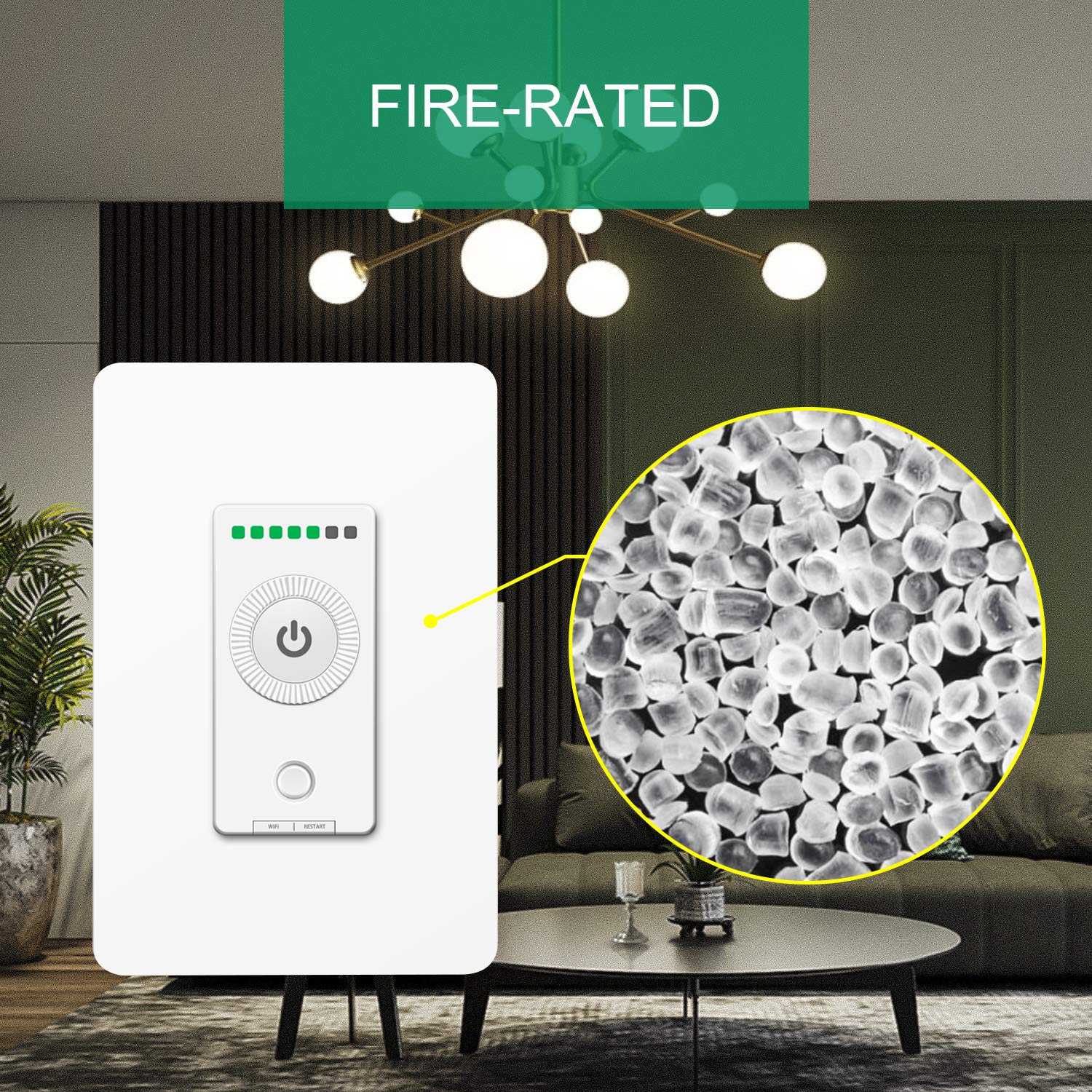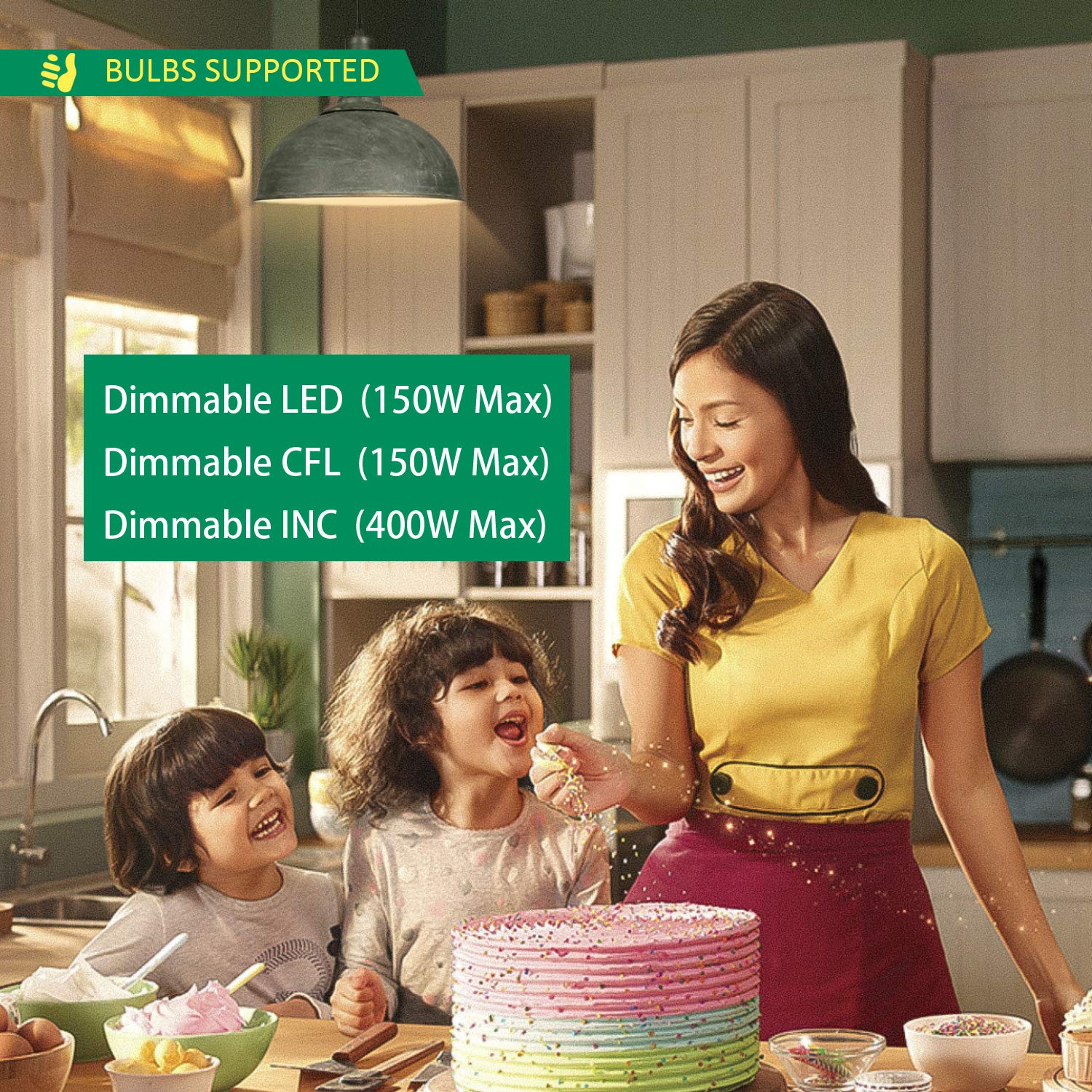Customer Services
Copyright © 2025 Desertcart Holdings Limited
Desert Online General Trading LLC
Dubai, United Arab Emirates










💡 Light Up Your Life with Smart Control!
The Smart Dimmer Switch by Martin Jerry features a rotary design and Trailing Edge dimming technology, ensuring optimal compatibility with LED bulbs. It requires a neutral wire and operates on 2.4G Wi-Fi, allowing for advanced scheduling and smart home integration. With a dedicated support team and a solid warranty, this dimmer switch is designed for the modern, tech-savvy homeowner.
M**L
Pro's and Con's
I have purchased 6 Single-Pole and 2 Three-Way dimmers, and installed all but 1 Single-Pole (due to junction box not having a neutral or ground wire). Here the pro's and con's.1. Appearance and form factor is very unique, cool and appealing, easy to use manually.2. Trailing edge tech works so much better for LED lights than almost every other dimmer out there. (Very difficult to find - search for "trailing edge dimmer" on Amazon and the results will be almost all NOT trailing edge.)3. Minimum brightness setting is very handy.HOWEVER,1. No screw terminals - only several wires sticking out the back. At least 3 of their competitors (albeit in the Z-Wave range) - Enbrighten, Zooz and Eva - all have screw terminals. The excess wires cause lots of headaches getting it cleanly installed, especially in 2-gang and 3-gang boxes.2. Wish it was Z-Wave compatible, which is a much more widely-used standard, and the Smartthings app is superior to the Smart Life app required for these. (so now I have 2 different apps for home automation) One downside is that they connect to your Wi-Fi router, and not a hub, which will lead to an excessive number of devices on your Wi-Fi.If you're looking for simplicity, especially if you're starting from scratch, these are the way to go. If you're adding on to a Z-Wave system, probably look at the Zooz trailing-edge dimmer. It's not as cool w/ the rotary dial, it's the same price as the M-J 3-Way, but there's not a cheaper single-pole alternative.
B**K
Works great, added to home assistant using localtuya.
The vendor has instructions on how to flash Tasmota, but the pins require some soldering. At the time I didn't have a USB FTDI adapter, so just added the switch to Tuya's iot platform, then setup in home assistant using localtuya. I will probably flash Tasmota eventually but they are working fine as is.The dimming function is great and smooth, though I can't tell a difference in performance compared to the Zooz zwave dimmers I have.Personally, I really like the aesthetic. We put these in our media room and the soft glow buttons and green LED's indicating brightness levels are really a nice touch.The dimmer dial itself is not great and probably the only negative. If you're going to be dimming manually at the switch a lot, you might want a different style. If you're going to use automation/scenes and periodically adjust - these are great.
S**K
Nice design
New Update;;; All three that I have purchased have problems. The manual dial for setting brightness are failing. Spinning the dial produces erratic results. Lights jump from bright to dim to bright etc. Can not simply set brightness. When using voice commands from Google Home the lights do not respond to requested brightness levels. One of the dimmers causes the lights to flicker. Very disappointing.UPDATE: March 10 2021I now have three of these installed in two different homes. All three have the same operational behavior. I will try to explain what this is and why I don't like it.Manual operation.You can set the brightness level by spinning the dial. But the light do not need to be turned on. So you can di the light setting before turning on. This is a nice thing.BUT BUT this behavior is the same when using voice commands. If you want to turn the light on to say 20%, you first say "Hey Google (or Alexia) kitchen light 20 per cent". Then you need to ask to "Turn on Kitchen Lights". Every smart bulb I have and one other smart dimmer if I say " Kitchen lights 20 per cent" they will turn on at 20 per cent. Why does Martin Jerry have this behavior? I have communicated with them several times over three months, and they have said they will get back to me, but have not yet, This device behavior and the lack of re3sponse from Martin Jerry is pushing me to consider a different vendor for my upcoming large project.Purchased and installed for my sister. Integrated with Google Assistant. Works as expected with one pesky issue. Sometimes between the device and Assistant it won't "Turn On". But will respond to "Lights 50%" etc.Also note that there is an adjusting wheel on the bottom of the device. This will set the lowest level the dimmer will go to. This wheel is not accessible after installation. In this case the lights did not get dim enough and my searching found that I had missed this adjustment in the instructions. (Note to self - read more carefully). Removing the dimmer switch from the wall and turning the wheel to lowest level, brought the lights to the level desired by my sister.
R**R
Could’ve been defective. It flickered up a storm like a strobe light almost I’m exaggerating.
The part may have been defective internally because it worked worse in the one I had my customer pick up from Home Depot for LED bulbs
L**Y
Good looking switch with great chipset
Review based on my 1 month experince with this switch..I have plenty of smart switches at my home. I exclusivly buy devices with esp8266 chip (this switch has one too). This chip can be reprogrammed so you can have it controlled by your local server (instead of going over internet to talk to overseas server controlled by third party). There are several open source firmware available (tasmota, esphome etc) which you can install on this switch giving you full control.Few pros of this switch -1) Really nice looking2) Able to install open source software3) has several additional controls (dim level, night light etc)4) Like the rotary dimmer. it is very smooth (stepless)Not to good thing-Buttons to turn on/off and night lights are small. I would prefer if on/off switch was really big so I don't have to position my figure on exact spot when turning on/off. Nightlight feature is probably not going to be used that frequently so it could be moved to a small button or even to phone app. There is no point in keeping bottom half of switch for a button which will be used very occasionaliy at expense of on/off button which will be used almost daily.BTW, I didn't notice any difference with trailing edge dimming functionality. Maybe people with senstive eyes can detect it.Overall, I bought the switch for looks and open source firmware compatibility. And I was not disappointed.
Trustpilot
2 months ago
1 month ago